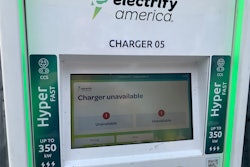In January, I answered your top questions about propane as a vehicle fuel. Now that you’re better acquainted with this cost-cutting, emissions-reducing alternative, it’s time to consider incorporating it into your fleet. There’s nothing complicated about it. Purchasing a truck fueled by propane can be done in three easy, pain-free steps.
Step 1: Place your order.
Order a truck in the same way you would order a gasoline or diesel model. The vehicle ordering timeframes are determined by normal chassis build lead times. Then, through a propane system manufacturer, a new or used vehicle will be upfitted to run on propane autogas. The upfitting process takes about 12 hours, adding only a short time to your delivery.
There’s no need to purchase an entirely new fleet to meet emissions goals and reduce operating costs. You have the option of upfitting an existing non-gaseous prepped chassis to transition to run on propane autogas.
Step 2: Choose how you will fuel your propane trucks.
Propane suppliers specialize in helping fleets choose the right fueling option based on fleet size, routes, budget and facility space.
Your local propane fuel supplier can install propane infrastructure at low (even zero!) cost with a fueling contract. Services include: installing propane infrastructure; ensuring tank installation meets local requirements; developing a custom fueling schedule based on a fleet’s usage; and creating a fuel contract to lock-in a set price per gallon.
Mobile fueling is another option, where a local propane supplier comes to your location and fills up your vehicles directly from their “bobtail” fueling truck.
Public stations can be a solution if your space is limited. There are thousands of public fueling stations across the United States offering propane autogas, according to the U.S. Department of Energy. Fleets can take advantage of public fueling networks with no infrastructure investment, but, in turn, less convenience.
Step 3: Maintain your vehicles the same way you already know how.
Maintenance on propane trucks is easier and cheaper compared with gasoline or diesel vehicles. Plus, your propane vehicles have the added benefits of minimizing costs and lowering emissions.
Unlike diesel models, vehicles that run on propane autogas do not require burdensome and costly after treatment measures, such as additional fluids or filters; exhaust after-treatment or diesel emissions fluids; particulate trap systems; turbochargers or intercoolers.
Propane vehicles do not require specialized technicians, although training is available online or in-person. Maintenance facilities that are currently approved for working on gasoline or diesel vehicles do not need any ventilation modifications to add propane vehicle maintenance to the facility.
Keep in mind that “renewable” propane is an alternative fuel option that is on the horizon. This near-zero fuel will power any current propane vehicles without any upfitting needed.
Do you have other questions about what’s involved in buying propane trucks? Ask away!









